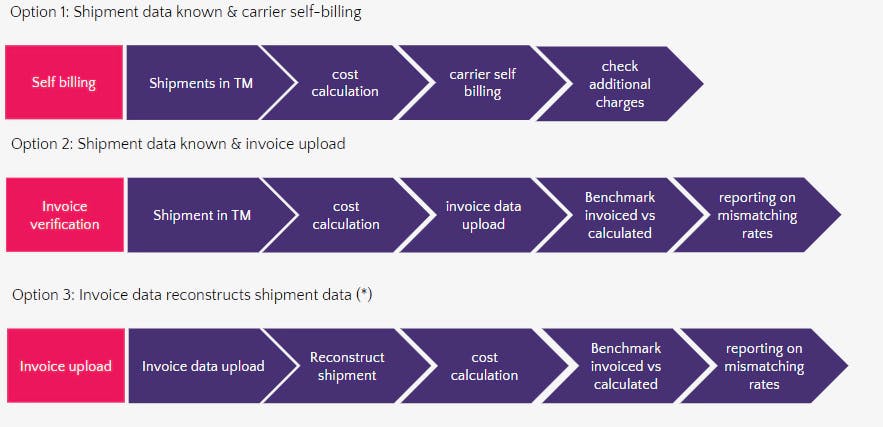Introduction to freight invoicing
Background
Matching invoiced freight costs with accrued freight costs can be challenging. Transmate helps you to verify your freight invoices. There are 3 ways how you can implement Transmate's invoice audits:
On existing shipment data with carrier self-billing/selection
On existing shipment data with invoice data upload (matching)
Invoice data only (calculating all shipment costs based on data available)

Carrier self-billing or selection
In this scenario, the shipment data is known and available in Transmate. This is either through:
- use of Transmate TMS- shipment data upload- integration with your ERP
Based on the shipment information and the available rate cards. Transmate will calculate the applicable rates. When the carrier (or accounting) selects the performed shipments, the system will indicate the total invoice amount.
Invoice matching
In this scenario, the shipment data is known and available in Transmate. This is either through:
- use of Transmate TMS- shipment data upload- integration with your ERP
The carrier or accounting can upload the invoice data. Transmate will match the shipments on the background based on reference numbers. Next, the system benchmarks the calculated costs versus the costs in the invoice data and calculates deltas.
Invoice data only
In this scenario, there is no shipment data available in Transmate. All shipment data, and calculated costs are calculated based on information available in the invoice data file.
When the file is uploaded transmate will:
- validate shipment information- calculate shipment costs- benchmark calculated vs invoiced freight costs